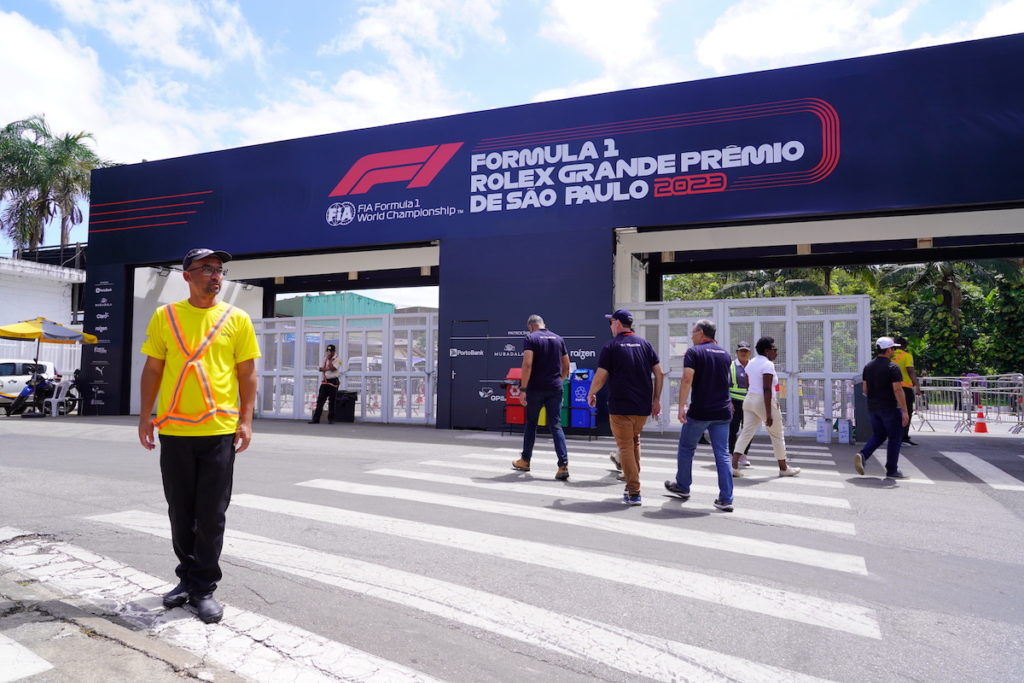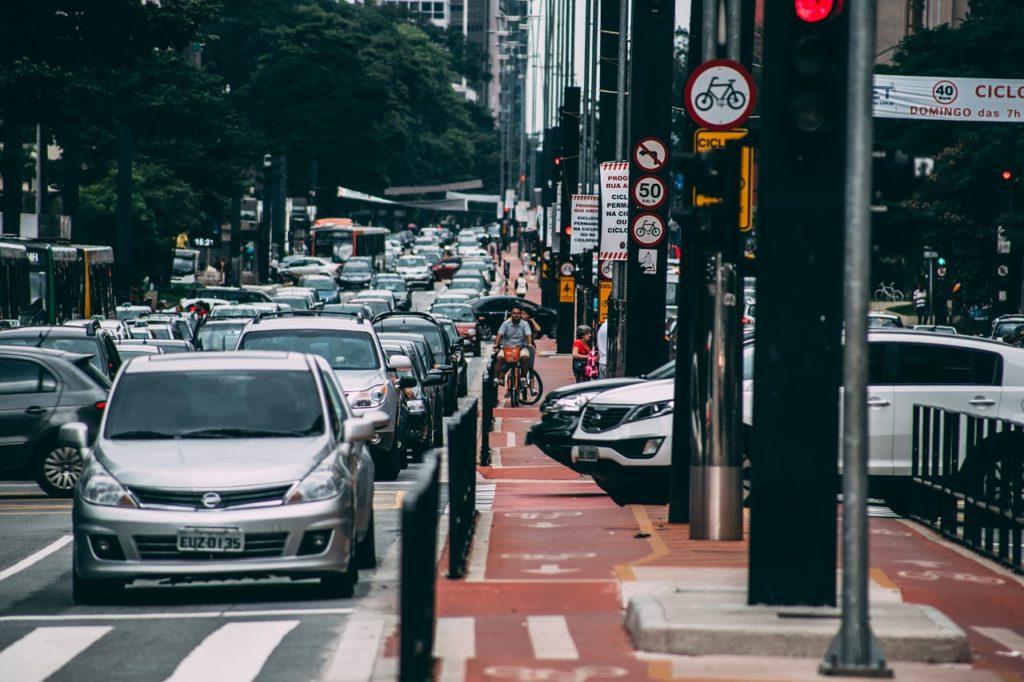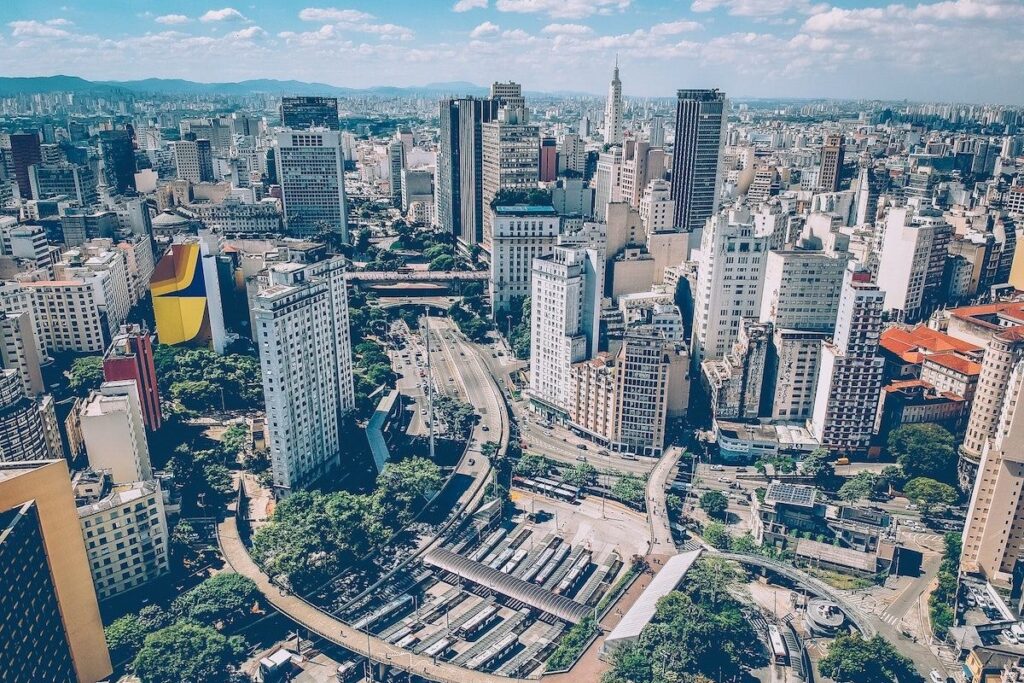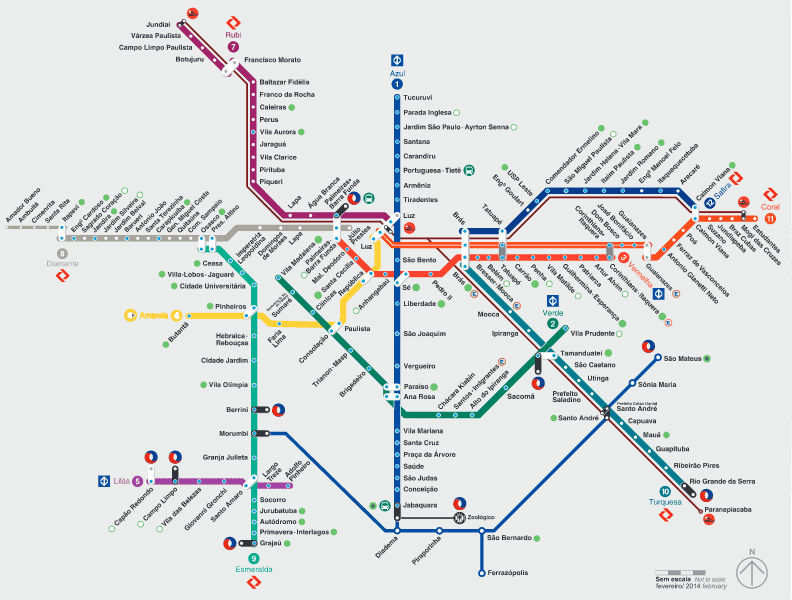
How to get to Interlagos for the 2025 São Paulo Grand Prix plus the best ways to get around São Paulo & public transport advice
- The 2025 São Paulo Grand Prix is scheduled for November 7-9
- Tickets & F1 Experiences Packages are on sale now
- This post contains affiliate links. We may receive a commission if you make a purchase after clicking on one of these links
When it comes to getting around in São Paulo, heavy traffic and big delays are a way of life, despite the government’s best efforts to reduce the number of cars on the congested roads. The best way to get to the circuit is to take the metro with other fans, or a taxi/Uber.
The Brazilian Grand Prix was in the news for the wrong reasons in 2017, with F1 personnel subject to several armed robberies near the circuit on Grand Prix weekend. You are less likely to be a robbery target as a spectator at Interlagos, but we still recommend taking extra precautions in São Paulo. Don’t wear any clothing or expensive jewellery that will potentially make you a target, and never visit favelas (shanty towns).
São Paulo’s Airports
Being the biggest city in all of South America let alone Brazil, São Paulo has several airports. Its main hub is Guarulhos (GRU), while the second-busiest is Congonhas (CGH) and Viracopos (VCP) is the smallest and lesser-known airport of the three. Wherever it is you’re flying in from, you’re sure to find a flight option that suits your dates and your budget. Fancy making a holiday of it? Why not fly onward to Rio de Janeiro for a week on the beach after your F1 weekend? It’s just an hour’s journey by air from São Paulo.
São Paulo’s largest airport Guarulhos (GRU) is also a major hub for domestic flights to some of the biggest destinations, including Galeao International Airport (GIG) in Rio de Janeiro. Other popular destinations include the capital Brasilia, the only city worldwide built in the 20th century to have world heritage status, Manaus (gateway to the Amazon), Recife and Fortaleza. The best airlines for in-country travel in Brazil are Avianca, Gol and LATAM. Some of the most popular connections to São Paulo are listed below:
- Flights from the USA: Several airlines fly direct to São Paulo from the USA. The best value carriers are Azul, LATAM, Avianca and Copa Airlines, which all offer lots of connections and the most competitive prices. Azul offers flights from Orlando to VCP and Avianca has the best deals for fans flying from New York. Copa Airlines serve much of the west coast with reasonably-priced flights to GRU, all with stopovers but at competitive prices.
- Flights from the UK: Brazilian national carrier LATAM operates non-stop flights to São Paulo Guarulhos from the UK, as does British Airways. LATAM’s fares are generally a lot cheaper than BA. Slightly cheaper flights can be booked with Portuguese carrier TAP (via Porto or Lisbon). As always, it pays to get ahead of the game and get your seat booked well in advance as prices rise closer to race weekend.
- Flights from Europe: LATAM operates non-stop flights to GRU from Milan, whilst Air France offer slightly cheaper options with stopovers. You can fly direct from Paris to São Paulo with LATAM, with several other airlines offering cheaper fares with a layover. Those travelling from Munich can fly with Brazilian carrier Azul to Viracopos, whilst Turkish Airlines fly from several European cities to Guarulhos via Istanbul.
- Flights from Australia: Most return flights from Sydney to São Paulo involve stopping at least twice en route. Flying from Melbourne tends to be cheaper, though the cheaper flights usually involve two stops en route. Flying in from Perth usually means just one transit stop, with Etihad offering the lion’s share of the flights.

São Paulo: Airport to the City
From Guarulhos (GRU) Airport: Use Uber to book a taxi from the airport, or use one of the Guarucoop cabs waiting outside the terminal, which can be prepaid. Expect to pay between 100-150 BRL ($30-45 USD), depending on your final destination in the city. Be warned that the journey from GRU to Centro can take anything from 45 minutes to three hours. Shuttle buses run between Guarulhos and various city destinations and metro stations, costing around 40 BRL ($12 USD) one way. Other buses (257 and 299, for example) also shuttle passengers from airport arrivals to Tatuape metro station, which takes you into the city. LATAM and Azul passengers can jump on a complimentary airport shuttle bus to Congonhas airport, which will bring you much closer to the city cente
From Congonhas (CGH) Airport: Located just 14km (9 miles) from the city and a similar distance from the Interlagos circuit, there plenty of buses running from CGH airport to central locations like Paulista Avenue for as little as BRL 4 (just over $1 USD). Airport buses also travel to metro stations like São Judas and Conceição, which will skip the traffic jams and speed you into the city. Likewise, taxis are plentiful but try to get an idea of what the traffic is like before you commit to a taxi ride. It might be better to head for the metro.
Hotel Bookings & Circuit Transfers with F1 Experiences
Book your hotel and circuit transfers for the São Paulo Grand Prix via F1 Experiences. Coach transfers are available for F1 Experiences guests who have booked their hotel together with an Official Ticket Package. F1 Experiences secures room allocations at some of the most sought-after hotels in São Paulo on race weekend, and return bus transfers from your hotel to the Interlagos circuit can be added to your booking. View São Paulo 2025 ticket packages & hotels

How to Get Around in São Paulo
If you don’t want to get stuck in the city’s terrible traffic jams, then public transport is the way to go, especially the metro. Buy yourself a Bilhete Único smartcard which is used for paying bus, metro and train fares. Issued at underground stations, these cards can be topped up at supermarkets and newspaper stands – just look for the logo. Generally, a three-hour period of travel costs about BRL 3.50 (just over $1 USD) with one of these cards.
Uber also works well in São Paulo. In most parts of the city, it’s possible to order a car within a few minutes, and fares are reasonable. For better quality of cars and increased security, consider paying more for Comfort or Black options. Uber is also worth considering for trips to and from Interlagos, though traffic can be an issue at peak times.

How to Get to Interlagos
Taking the metro is undoubtedly the safest and cheapest option for getting to and from the track, provided you keep your wits about you and remember the basics (don’t flash your cash, keep your bag where you can see it). Armed with your Bilhete Único, you can take the metro from virtually anywhere in the city to the Autodromo metro station in Interlagos, which is just 600 meters from the circuit’s entrance. The Autodromo metro stop is near the southern terminus of the light green Line 9 (Esmeralda). Allow around an hour to travel from Vila Madalena and 45 minutes from Pinheiros, plus walking time. Be warned that the road from the train station to the track borders a favela, so always walk within a group and never stray from the populated areas. Several bus lines also serve the circuit; click here for a full list.



Any experience with getting to the track by Metro. Guess it is the most efficient way.
Honest question: Is it really that dangerous passing the favela – the additional hint “sounds like that”, but is that behaviour not common in any other country, too?
Have to say, I have never been to Brazil before!
Thanks everyone.
You should be fine as long as you use your common sense. Metro is best way. Don’t be flashy with wearing/showing expensive items and stay with the other people going to the track.
Yeah alright, sounds logical and is exactly what I thought. Guess there will be a lot of people from Friday to Sunday who are going to the track.
As it might be the last GP this year in Sao Paulo, it’s time to start planning and collecting information.
Is traffic so bad that the metro would be faster than hiring a private car? The metro in Barcelona on Saturday and Sunday took hours to get on from all the people leaving the race.
Yes, Metro is quicker. Not really a good comparison with Barcelona, as that is a normal train that doesn’t run so frequently as the metro does.